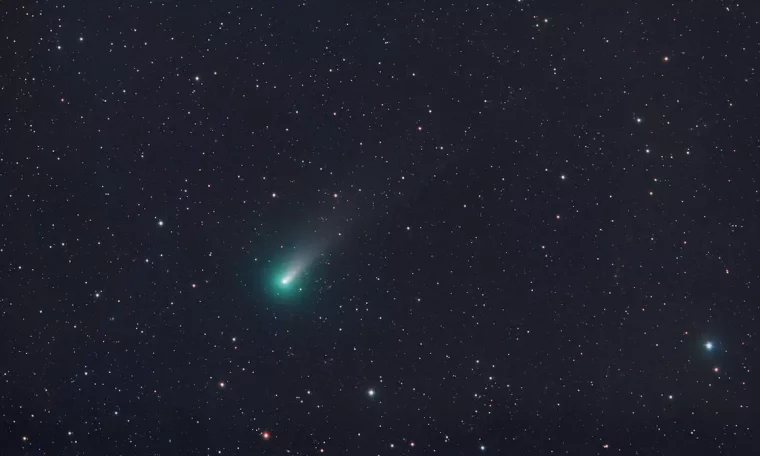
“Comets are like racehorses, he says. Because the bets on them are often very uncertain. The brightness of a comet often does not behave as predicted by the order that the comet should continue to shine as it approaches the Sun. ,” commented Suchan.
“This is happening right now with Comet Leonard, which, without binoculars, gave hope for the December spectacle to the naked eye. However, recent observations indicate a gradual halt in the development of its clarity. And because the comet The brightness of a comet depends greatly on the activity of its core, that is, how much dust comes out of the comet’s core, this fact could mean, for example, the possible start of a comet’s decay,” explained the vice president of AS.
further research is needed
However, according to Suchan, the pessimistic prediction is not yet certain and only further observations will confirm what is actually happening.
“The Society for Interplanetary Matter at SAS has analyzed astrometric data, and the comet is not yet deviating in its orbit, which does not confirm the decay of the comet’s core. It is impossible to predict what the comet will do next.” going to do it,” he said.
According to Suchan, the comet can weaken very quickly or almost disappear from the sky after disintegration and is visible only to large telescopes. “Or there may be an unexpected important explanation. But if its clarity exceeds the range of observation by the eye, that is now a big question,” he said.
Observations from mid-November
According to more than a week old words from the popular astrophotographer and astronomer Petr Horalek, it was already difficult to tell exactly how the comet would appear. “At this time (November 23), the comet is still below the line of sight with the naked eye. But it is expected that there will be better visibility around December 6th.”
“Between 6 and 12 December, it should be so clear that if it is really above sight, it should be visible outside the city,” he said, adding that the comet was only seen by people early in the morning. .
“And it is closer to December 12 and it will get worse. It will be seen sometime between four and six in the morning on the eastern horizon. Every day there will be less and less on the horizon,” he warned in late November.
With the help of smaller telescopes, people could see Comet Leonard in the second half of November, according to astronomer Martin Massek (FRAM Robotic Telescope Operator of ASCR’s Institute of Physics at the Pierre Auger Observatories in Argentina and CTA in Chile and La Palma) morning. With good visibility after 3 o’clock. However, these observations were somewhat disturbed by the full moon.
According to an earlier statement by Masek, the comet may cross the line of good visibility in the first days of December. In that case, people in places without light pollution could see it with the naked eye. The moon of that time will also be new.
The comet is then to reach the constellation Shepherd, pass over the bright star Arcturus on December 6th, and cross into the constellation Snake on December 8th.
It probably doesn’t fly around the Sun the first time
Comet C/2021 A1 (Leonard) was discovered by American researcher Gregory Leonard on January 3 this year at Mount Lemmon Observatory in Arizona. While it was 737.5 million km away from Earth at the time of its discovery, on 12 December it will reach a distance of only 34.9 million km.
Comet Leonard’s Orbit in the Solar System
Photo: Catalina Sky Survey
According to the website of the Czech Astronomical Society, the comet makes its closest approach to the Sun on January 3, 2022, at a distance of 92 million kilometers from our star.
According to scientists, the comet probably made an orbit around the Sun in the distant past.



